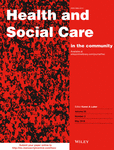Developing and utilising a new funding model for home-care services in New Zealand
Funding information:
The research was funded by Auckland District Health Board, New Zealand.
Abstract
Worldwide increases in the numbers of older people alongside an accompanying international policy incentive to support ageing-in-place have focussed the importance of home-care services as an alternative to institutionalisation. Despite this, funding models that facilitate a responsive, flexible approach are lacking. Casemix provides one solution, but the transition from the well-established hospital system to community has been problematic. This research seeks to develop a Casemix funding solution for home-care services through meaningful client profile groups and supporting pathways. Unique assessments from 3,135 older people were collected from two health board regions in 2012. Of these, 1,009 arose from older people with non-complex needs using the interRAI-Contact Assessment (CA) and 2,126 from the interRAI-Home-Care (HC) from older people with complex needs. Home-care service hours were collected for 3 months following each assessment and the mean weekly hours were calculated. Data were analysed using a decision tree analysis, whereby mean hours of weekly home-care was the dependent variable with responses from the assessment tools, the independent variables. A total of three main groups were developed from the interRAI-CA, each one further classified into “stable” or “flexible.” The classification explained 16% of formal home-care service hour variability. Analysis of the interRAI-HC generated 33 clusters, organised through eight disability “sub” groups and five “lead” groups. The groupings explained 24% of formal home-care services hour variance. Adopting a Casemix system within home-care services can facilitate a more appropriate response to the changing needs of older people.




